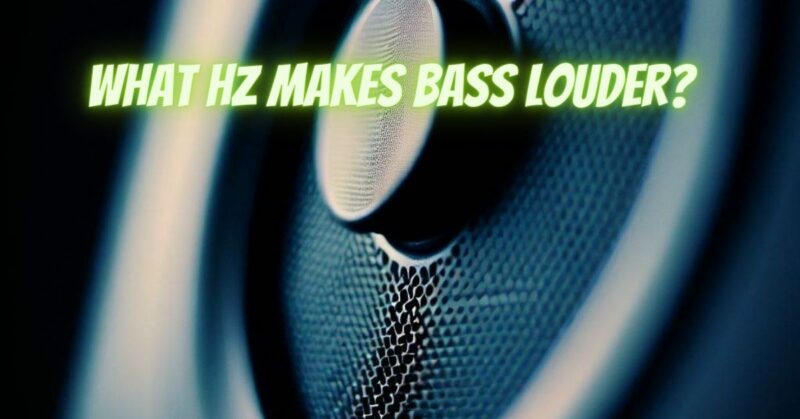When it comes to experiencing the full impact of bass, understanding the frequency range is essential. Many enthusiasts wonder which specific hertz (Hz) range makes bass sound louder and more pronounced. In this article, we will delve into the frequency spectrum and explore the Hz range that tends to enhance the perception of loud bass.
The Bass Frequency Range: Bass frequencies typically occupy the lower end of the audible spectrum. The frequency range for bass varies depending on the context and personal preferences. However, there are specific frequency ranges that are commonly associated with the perception of louder bass:
- Sub-Bass Frequencies: Sub-bass frequencies refer to the ultra-low frequencies below approximately 60 Hz. These deep and powerful tones are often felt more than they are heard. Sub-bass frequencies have a visceral impact, producing the rumbling and shaking sensations that are characteristic of intense bass experiences.
- Bass Frequencies: Bass frequencies typically range from around 60 Hz to 250 Hz. This range encompasses the fundamental frequencies that contribute to the fullness and weight of the bass. The lower end of this range emphasizes the depth and impact, while the upper end adds clarity and definition to the bass notes.
Enhancing Bass Perception: While specific frequency ranges can contribute to a perception of louder bass, it’s important to note that other factors play significant roles in enhancing the overall bass experience:
- Speaker and Room Acoustics: The quality and capabilities of your speakers, as well as the acoustics of your listening environment, greatly impact bass reproduction. Well-designed speakers and optimized room acoustics help maintain accuracy and clarity, allowing for a more impactful bass response.
- Amplification and Equalization: The power and quality of the amplifier driving your speakers, as well as the use of equalization, can influence the perception of bass. Adequate amplification ensures that the speakers have enough power to reproduce bass frequencies accurately, while equalization can help fine-tune the bass response to your preferences.
- Mixing and Production Techniques: In the realm of music production, various techniques are employed to enhance the impact of bass. Compression, equalization, and layering techniques are used to create a well-balanced and powerful bass presence in recordings. High-quality recordings with well-crafted bass elements can contribute to a perception of louder and more engaging bass.
Conclusion:
When seeking to experience louder bass, focusing on the sub-bass frequencies below 60 Hz and the bass frequencies between 60 Hz and 250 Hz can provide a foundation for impactful bass reproduction. However, it’s important to consider that the overall bass experience is influenced by factors such as speaker and room acoustics, amplification, equalization, and production techniques. By considering these elements and finding the right balance, you can create an immersive audio experience that showcases the full potential of loud and captivating bass.


